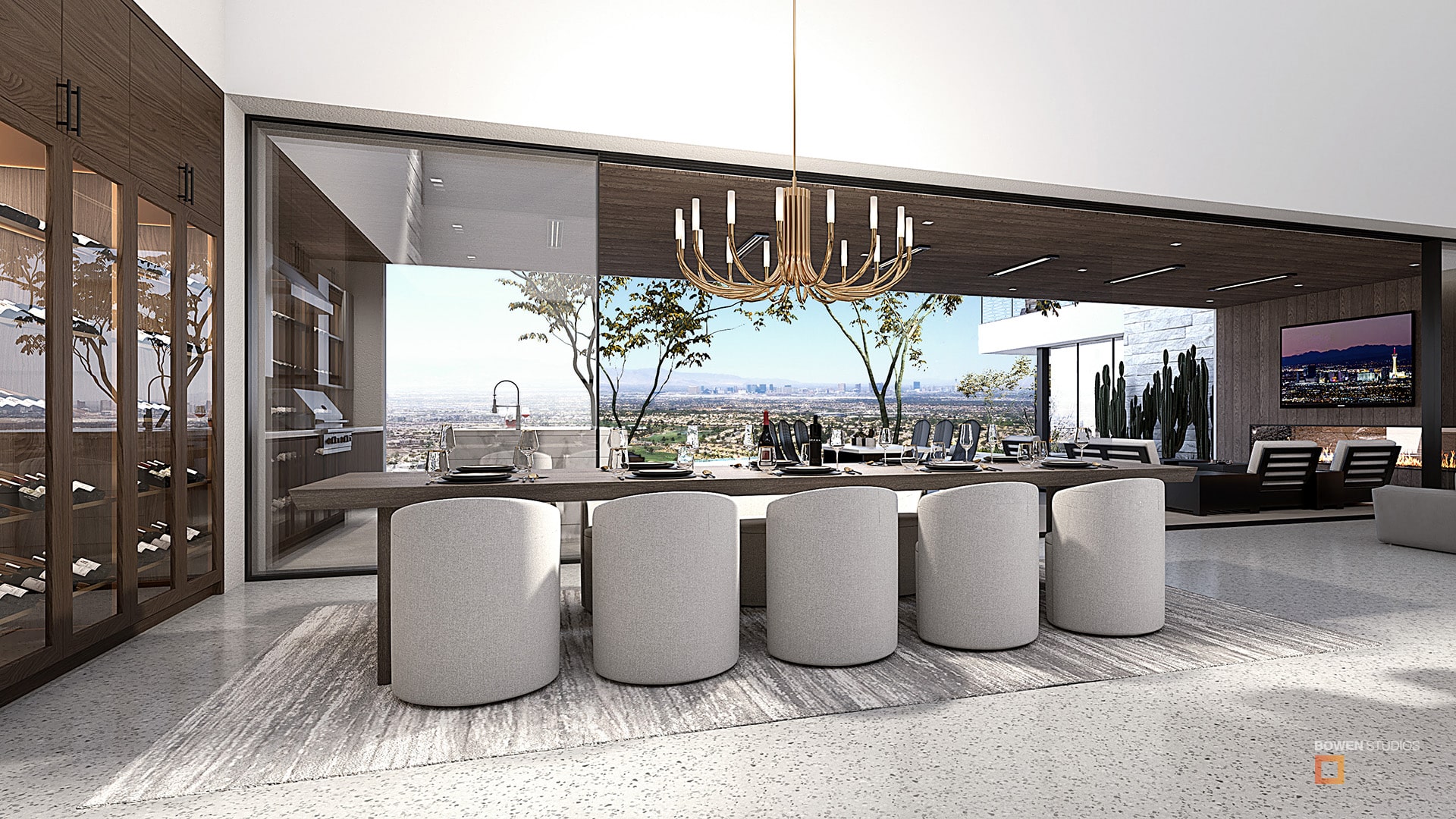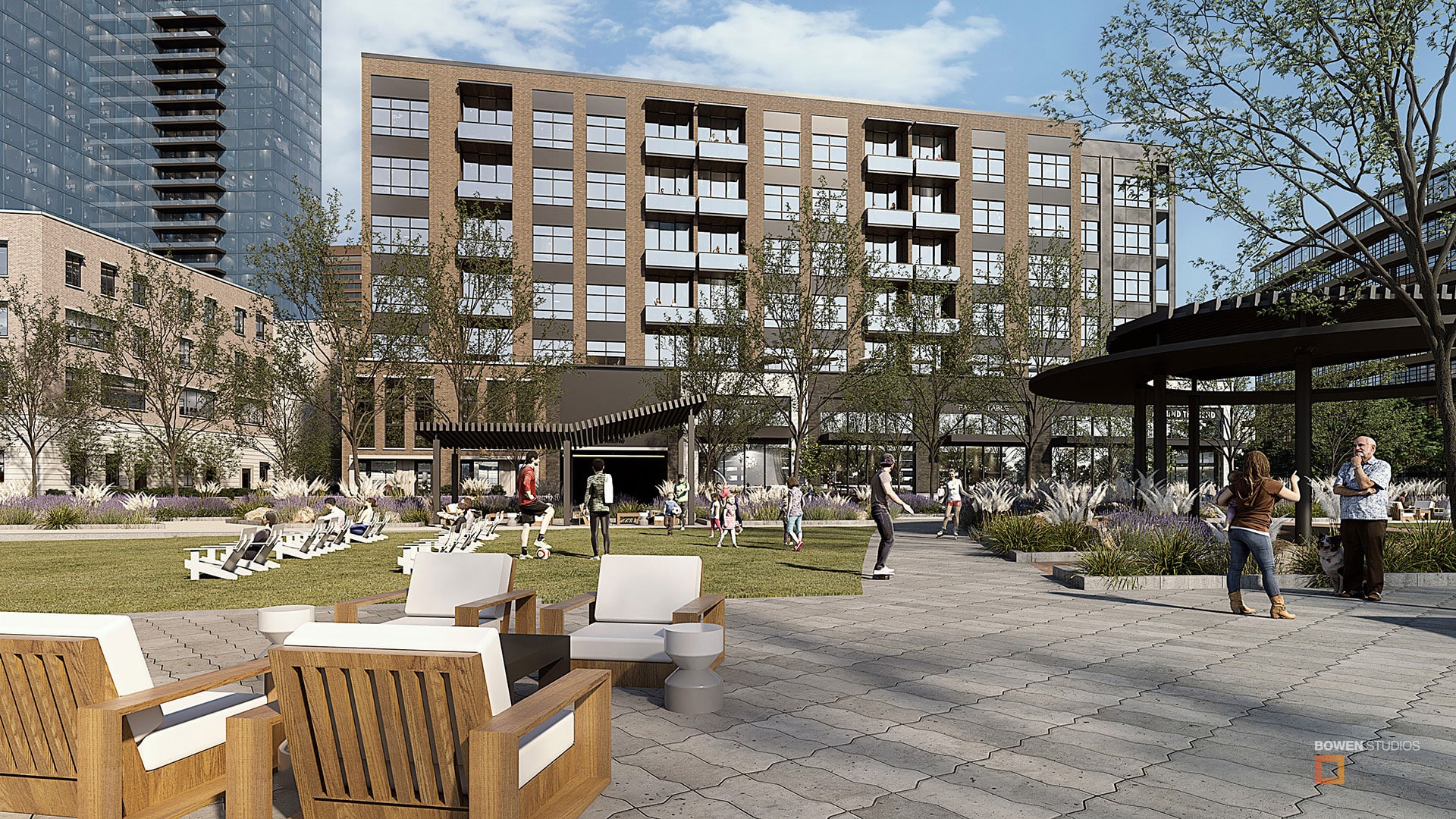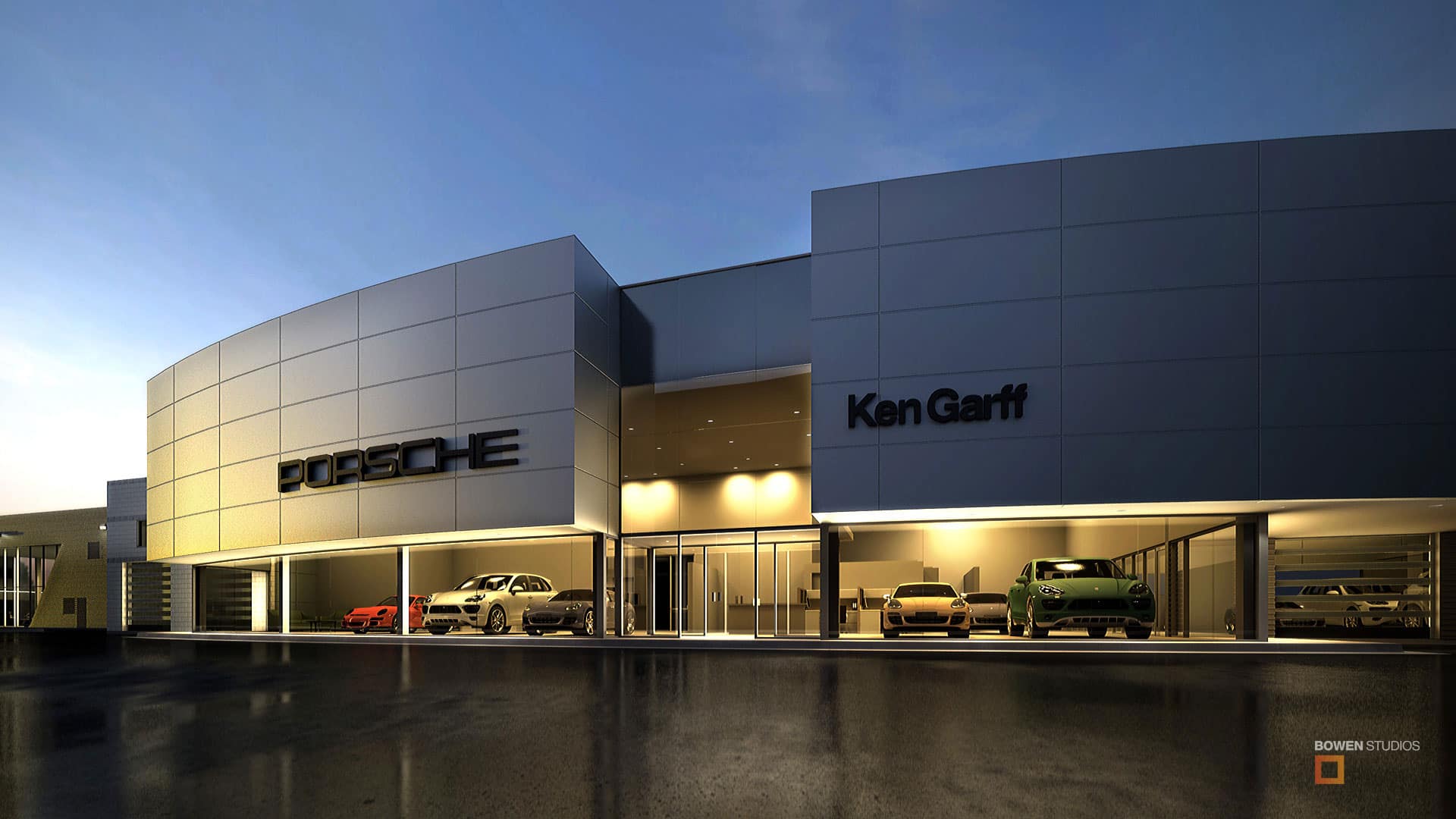Visualizing the Future of Design
3D rendering services turn design concepts into vivid, lifelike visuals. In fact, 3D renderings are like a magic portal between your imagination and the real world. They take your blueprints, sketches, or scribbled napkin ideas and turn them into vivid, jaw-dropping visuals that feel almost real enough to walk through. Whether you’re an architect designing your next building, an interior designer curating the perfect mood, a real estate developer wooing investors, or a marketer crafting a campaign that sells the dream, 3D renderings are your secret weapon.
They don’t just create pretty pictures. They craft immersive stories. These digital designers transform static plans into compelling images, cinematic animations, and virtual experiences. It’s the difference between saying, “Imagine this,” and confidently showing, “Here’s exactly how it’ll look.”
Key Takeaways
- 3D rendering services provide realistic visualizations of architectural and interior designs before construction begins.
- These services help clients avoid costly errors, improve collaboration, and enhance marketing efforts.
- 3D renders can range from still images and walkthroughs to immersive virtual tours and 360° environments.
Table of Contents
- What Are 3D Rendering Services?
- Types of 3D Rendering Services
- The Rendering Process: Step-by-Step
- Timeline for a 3D Rendering Project
- Cost of 3D Rendering Services
- Transform Concepts into Clarity
- AI and the Future of 3D Rendering
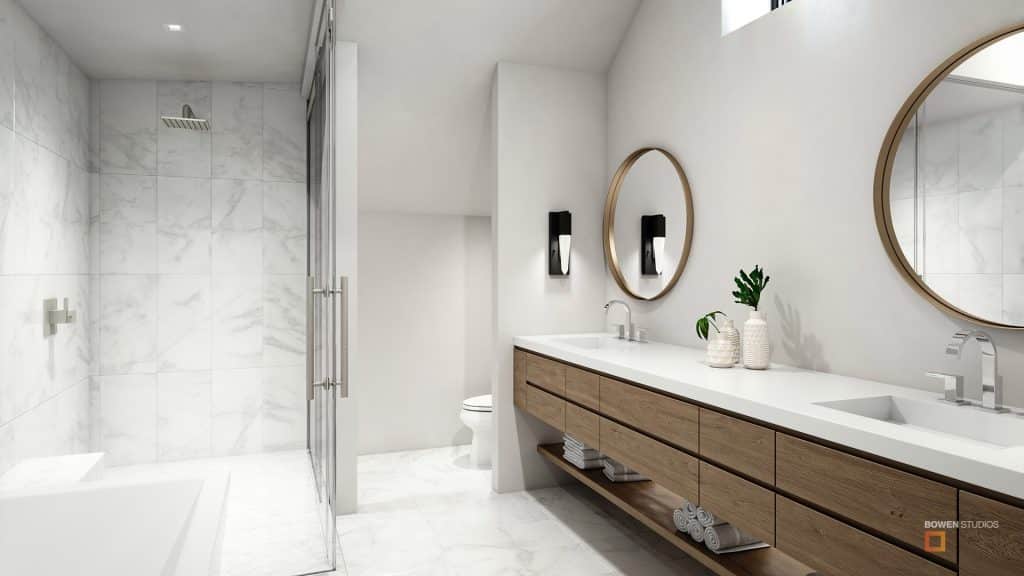
1. What Are 3D Rendering Services?
3D renderings involve creating two-dimensional visual outputs from three-dimensional models. These services are widely used in architecture, interior design, and real estate to produce photorealistic or conceptual images of proposed spaces.
Whether it’s a cozy furnished apartment, a sleek new office tower, or a sprawling luxury villa with ocean views, 3D renderings let your clients step inside before a single nail is hammered. It’s like time-traveling into the finished future of a project, minus the hard hat and construction dust. With just a click, they can stroll through spaces and truly understand the space.
2. Types of 3D Rendering Services
3D rendering has become essential in architecture, design, and real estate. Below is a breakdown of the most common types of 3D rendering, each tailored to enhance specific aspects of a project and elevate how clients and stakeholders experience it.
Here are the most common rendering services available:
- Interior Renderings
It is perfect for designers, decorators, and developers. It shows lighting, furniture, materials, and décor in photorealistic detail. - Exterior Renderings
This is ideal for architects and real estate professionals who want to showcase buildings, landscaping, lighting, and weather conditions from the outside. - 3D Floor Plans
It adds depth and realism to basic floor plans, which are great for marketing and easy buyer visualization. - 360° and Virtual Tours
Create fully navigable walkthroughs that immerse users in the environment. These are often used in luxury real estate and commercial development pitches. - Bird’s Eye View & Dollhouse Visualizations
Top-down or angled views give a broad perspective of a space or entire property layout. - Entourage & Staging
Virtual staging brings scenes to life with realistic people, vehicles, and furnishings that add scale, context, and atmosphere, perfectly conveying how a space will feel.
Adding people, furniture, foliage, and other decorative elements makes scenes more relatable and lively. These touches help potential buyers or investors emotionally connect with the space by simulating real-life scenarios. Strategic staging can also guide the viewer’s eye, emphasize key features, and bring the environment to life with a natural, human touch. The eye of a skilled creative can be essential, knowing what to include, where to place it, and how to evoke the right mood can elevate a rendering from technically accurate to genuinely compelling.
3. The Rendering Process: Step-by-Step
Bringing a 3D rendering to life is a collaborative and creative process that blends technical precision with artistic vision. From gathering initial design details to delivering a polished final image, each step plays a crucial role in transforming ideas into immersive visual experiences.
- Step 1: Information Gathering
We collect everything needed—floor plans, sketches, references, materials, and your design vision. - Step 2: 3D Modeling
We build a detailed 3D digital version of the space, including architectural features, furnishings, and decor. - Step 3: Texturing & Lighting
Textures are applied, and lighting is calibrated to ensure realistic shadows, reflections, and ambiance. - Step 4: Rendering & Entourage
We render high-resolution images and enhance them with people, plants, and personal touches to add life and realism. - Step 5: Revisions & Finalization
You’ll review draft images, request changes, and approve the final render. We ensure every detail aligns with your expectations.
The rendering process begins with gathering all project details and building a detailed 3D model. Next, textures and lighting are added to create visual realism. High-resolution renders are then produced and enhanced with entourage elements. Finally, the client reviews the drafts, requests revisions, and approves the final visuals, ensuring the outcome is both accurate and visually compelling.
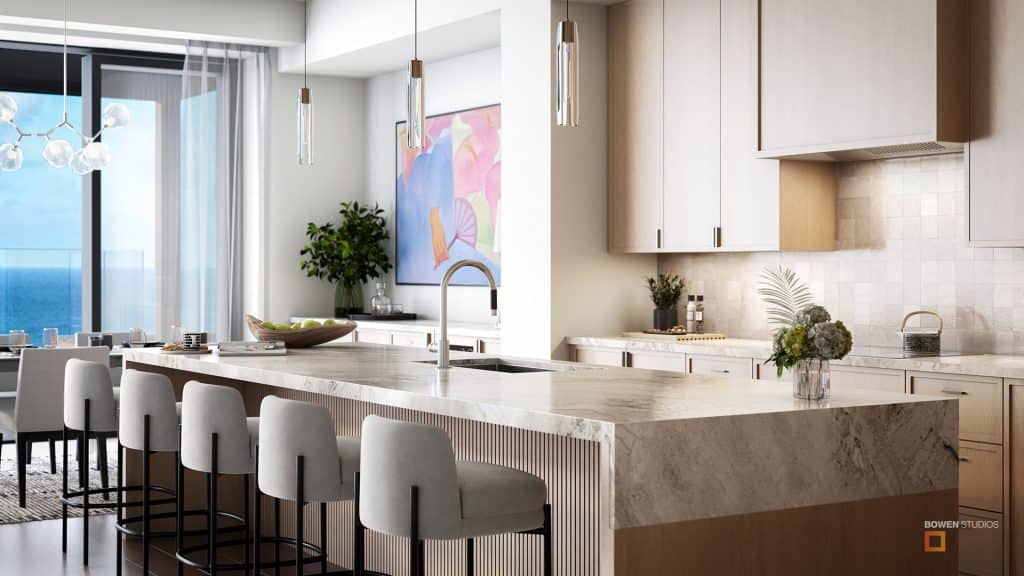
4. Timeline for a 3D Rendering Project
The timeline for a 3D rendering project typically spans a few days to weeks, depending on the complexity and scope of the work. The process begins with creating the initial 3D model, which can take one to three days. This is followed by design refinement and lighting setup, which usually requires one or two days to ensure the scene looks polished and realistic. Once a draft is ready, the client reviews the render and provides feedback, and edits and revisions generally take another day or more. After final adjustments are made, the completed render is delivered.
5. Cost of 3D Rendering Services
The cost of 3D rendering services can vary widely based on several key factors. Project size, the level of detail required, and turnaround time all play a role in determining the final price. For example, rendering a single room with basic furnishings and lighting will typically be less expensive than visualizing a large luxury interior with custom materials and intricate details. Interior renderings can also range in cost, depending on whether the project involves a small residential structure or a complex commercial development. Additional elements like 3D floor plans, bird’s eye views, and fully interactive virtual tours may also influence pricing, especially if advanced features such as navigation controls, staging, or environmental effects are included. Ultimately, every project is unique, and pricing is tailored to match the specific goals, scope, and expectations of the client.
It’s also important to be cautious of offers that seem too good to be true. Ultra-low pricing often signals a lack of experience, low-quality output, or limited revisions and support. Professional 3D rendering requires a blend of technical expertise and design skills. Always review portfolios, clarify what’s included in the service, and ensure timelines and deliverables are clearly outlined before committing to a provider. Quality renderings are an investment, and choosing the right partner makes all the difference.
6. Transform Concepts into Clarity
3D rendering is about bringing ideas to life and turning concepts into visuals that feel real and ready to explore. From interiors and exteriors to virtual tours and floor plans, these tools make communicating your vision easier, avoiding costly mistakes, and effectively market projects. Whether you’re in interior design, architecture, or real estate, these services help you show clients exactly what a space will look like before it’s built. With the right team and approach, 3D renderings become more than just pretty pictures. They’re tools for better communication, thoughtful planning, and confident project decisions.
7. AI and the Future of 3D Rendering Services
Artificial intelligence is reshaping the future of 3D rendering, opening up new creative frontiers and making the process faster, smarter, and more intuitive than ever before. As AI technology continues to evolve, it’s not just enhancing rendering, it’s transforming it.
- Faster Turnarounds, Smarter Design
AI-assisted rendering tools are accelerating production timelines by automating complex tasks like lighting optimization, texture mapping, and real-time feedback generation. What once took days now takes hours, without sacrificing quality. Designers can iterate faster, test more options, and get approvals sooner. - Predictive Visualization
With machine learning, AI systems can now analyze design inputs and suggest improvements before rendering begins. This predictive power helps avoid costly revisions by flagging potential inconsistencies and offering design alternatives based on past data, user preferences, or environmental factors. - Hyper-Personalization and Real-Time Adaptation
AI tools can tailor renderings to specific audiences. Whether you’re presenting to a developer, a homeowner, or a city planning committee, AI can modify scenes, changing furniture, colors, lighting, or staging style, on the fly to align with the viewer’s tastes or needs. Real-time rendering engines powered by AI also allow users to interact with design choices instantly, adjusting elements like finishes or layouts in seconds. - AI + Human Creativity: A Dynamic Duo
AI doesn’t replace the artistic eye, but it can amplify it. While machines handle repetitive tasks and surface smart suggestions, it’s the human touch that guides a space’s story, mood, and emotional resonance. At Bowen Studios, we see AI as a collaborative partner, empowering our designers to focus on the creative nuances that make a space unforgettable.
Ready to Bring Your Vision to Life?
Bowen Studios specializes in 3D renderings that impress clients, eliminate guesswork, and accelerate project approvals. From interior spaces to immersive virtual tours, we help you communicate your vision. Contact Bowen Studios today and let’s discuss your project.


